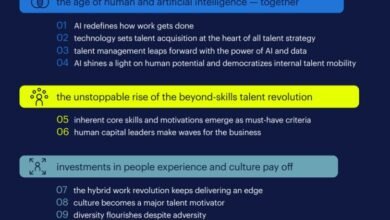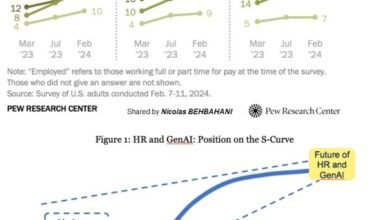
By | Devin Caldwell
While human beings are the backbone of any workforce, future technology can augment and supplement those human workers. With technology, someone like an accountant can do more faster, be confident his or her data is secure and be free from repetitive mundane tasks. Here are four accounting technology trends to watch.
1. Artificial Intelligence (AI)
AI incorporates many different tools and systems, from robots to the concept of the Intelligence of Things. Even at its most basic functionality, AI helps increase the productive power of accounting tools and machines and make many processes more efficient. AI can analyze data, crunch numbers and take care of other repetitive, redundant tasks that humans used to do. With his or her time freed up, an accountant can focus on interacting with clients and using data instead of simply processing it and moving it along to the next point in the workflow. Most AI tools are capable of monitoring data in real-time, which helps to keep processes on track and to quickly identify and resolve any issues that arise.
As AI capabilities increase, work can become more and more streamlined. Physical robots and software like robotic process automation (RPA) are best equipped to handle repetitive and time-consuming tasks, while intelligent automation (IA) learns from accountants communicating with clients to mimic basic human interactions and take care of actions like drafting email blasts and scripts for automated phone calls.
The Intelligence of Things takes robotics a step farther. It combines the Internet of Things with AI, machine learning and the interconnectedness of smart devices to create an AI network capable of operating without involving human workers. These systems are well-equipped to process and interpret large amounts of data and to track records like transactions in real-time.
2. Automated Software
Automated cash application software is a specific kind of robotic process automation that makes processing customer invoices into bank deposits fast and efficient. Utilizing automatic software helps make transaction turnaround times shorter and reduces issues like bad debt provision and unallocated cash. Automation also reduces the need for manual work, which in turn minimizes the potential for mistakes.
You can leverage automated software in a variety of ways, many of which simplify complex processes. Some cash application software automates accounts receivable management or reduces the time it takes to collect invoices and cash. Others improve cash flow and incorporate machine learning to continually increase efficiency. You can incorporate many automated software options into an existing ERP, which makes it easier for employees to get used to working with the new software. The speed and efficiency of automated software can help improve customer relations.
3. Blockchain
A blockchain is basically a very secure database. In a highly interconnected world, security is paramount, especially when so much of your business and transactions may be occurring in online spaces. With a blockchain, you have the advantage of performing many security functions within the same space. You can keep accurate records and store your data securely in the database. Additionally, you can verify the credentials of business contacts and the identities of customers, safeguard assets and data transfers and even draft and sign contracts in a secure online space.
Besides improving security options, the nature of a blockchain can reduce costs and make tracing data easier. So far, the blockchain model has not been widely adopted across the accounting industry and industry regulations need to be standardized to make the model effective. Once these changes occur, the blockchain model can become a powerful tool in the accounting world.
4. Predictive Analytics
Predictive analytics takes things a step beyond just making work faster and more efficient. Predictive analytics are advanced ways to collect and analyze data and generate predictions based on that data much faster than ever before. Leveraging data to gain insight into future trends has always been difficult to accomplish, but with the help of predictive analytics and other future technologies, data analytics can become easier to produce and to understand.
Predictive analytics has also become much more cost-effective in recent years with improvements to ERP systems and increased use of cloud technologies for storage and work.The more companies digitize, the more they will be able to leverage technology like predictive analytics.
As future technologies are adopted across industries, people will find new uses for them to augment and improve work processes.Automated Software






